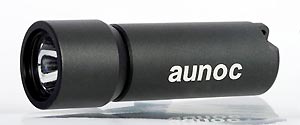- Home
- Directory
- Shop
- Underwater Cameras - Photographic Accessories
- Smartphone Housings
- Sea Scooters
- Hookah Dive Systems
- Underwater Metal Detectors
- Dive Gear
- Dive Accessories
- Diving DVD & Blu-Ray Discs
- Diving Books
- Underwater Drones
- Drones
- Subscriptions - Magazines
- Protective Cases
- Corrective Lenses
- Dive Wear
- Underwater Membership
- Assistive Technology - NDIS
- On Sale
- Underwater Gift Cards
- Underwater Art
- Power Stations
- Underwater Bargain Bin
- Brands
- 10bar
- AOI
- AquaTech
- AxisGo
- Backscatter Underwater Video and Photo
- BLU3
- Cayago
- Chasing
- Cinebags
- Digipower
- DJI
- Dyron
- Edge Smart Drive
- Eneloop
- Energizer
- Exotech Innovations
- Fantasea
- Fotocore
- Garmin
- Geneinno
- GoPro
- Hagul
- Hydro Sapiens
- Hydrotac
- Ikelite
- Indigo Industries
- Inon
- Insta360
- Intova
- Isotta Housings
- Jobe
- JOBY
- Kraken Sports
- LEFEET
- Mirage Dive
- Nautica Seascooters
- Nautilus Lifeline
- NautiSmart
- Nitecore
- Nokta Makro
- Oceanic
- Olympus
- OM System
- Orca Torch
- Paralenz
- PowerDive
- QYSEA
- Scubajet
- Scubalamp
- Sea & Sea
- SeaDoo Seascooter
- SeaLife
- Seavu
- Shark Shield
- Sherwood Scuba
- Spare Air
- StickTite
- Sublue
- Suunto
- SwellPro
- T-HOUSING
- Tusa
- U.N Photographics
- Venture Heat
- XTAR
- Yamaha Seascooter
- Youcan Robot
'Seascooter Simon' - a side-by-side review of the Seadoo Explorer and VS Supercharged
Contributed by Simon
 Right
off the bat I want to make it clear that, to the best of my knowledge, I've
never used an underwater scooter before. I say to the best of my knowledge because
I want to leave open the possibility that I've had a brief play with one in
the distant past and simply forgotten. I learnt recently that having two or
more serves of soy products a day can affect your memory. I drink a lot of soy
milk because since I was about 21 I've thought of it as comfort food (and it
makes me feel less guilty than scoffing dark chocolate, my other favourite comfort
food).
Right
off the bat I want to make it clear that, to the best of my knowledge, I've
never used an underwater scooter before. I say to the best of my knowledge because
I want to leave open the possibility that I've had a brief play with one in
the distant past and simply forgotten. I learnt recently that having two or
more serves of soy products a day can affect your memory. I drink a lot of soy
milk because since I was about 21 I've thought of it as comfort food (and it
makes me feel less guilty than scoffing dark chocolate, my other favourite comfort
food).
So why am I telling you this? Well I've been struggling with how these low cost, and lets face it, low budget scooters fit in with the Gavins, Oceanics, Apollos and Silent Submersions of this world.
After much deliberation I've come to the conclusion that SEA-DOO scooters are comfort food (a guilty pleasure). They may not be the best scooter you can possibly buy but they're great fun and have the potential to make certain diving experiences just that bit more pleasant.
If you're planning on going kilometers into underwater caves or hundreds of metres below the surface of the ocean to explore some insanely deep ancient wreck, this is not the scooter for you. Technical and cave divers should stop reading right now and go back to arguing about whether the Gavin or Silent Submersion handles are more comfortable after a four kilometer ride down a tunnel...
...Ok, now for everyone else lets start by setting a few ground rules. The purpose of this review is to compare the top of the range SEA-DOO Explorer with the SEA-DOO VS Supercharged scooter. I didn't have access to any other brands so I'm just going to look at how these models compare and make a general assessment of them from the little I've learnt about scooters over the years and from a few dives with each model.
I had the opportunity to try the scooters on a few working dives at Julian
Rocks and a drift/wreck dive in the Tweed River. The sort of questions I personally
wanted to answer were;
- Would I buy one of these scooters? Which one?
- What would/could they be used for? Having established that if your life depends
on having a large powerful scooter to get you and a ton of gear in and out of
some dark or deep place these are not the optimal choice.
- I felt it would also be useful to include my impressions about how reliable/functional
each of these scooters would be. I have tried to identify a clear winner out
of the two based on what I felt were reasonable criteria for a scooter aimed
at a recreational market and based mostly on the diving experience.
-What's all that racket? Being used to gliding around with just the sound of
my own bubbles the first thing I noticed about scooter riding was how loud each
scooter was, and not in a good way. Unfortunately, the noise produced by one
of these scooters (and I presume any scooter) is less like the satisfying rumble
of a 5 litre V8 thundering around winding mountain roads and more like your
neighbours whipper snipper first things on Sunday morning.
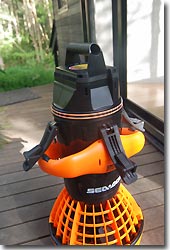 Be
prepared, if one of the things you enjoy about diving is the contemplative silence
of the underwater world then that is not the experience you'll be getting. I
should say however that I got used to the noise after the first dive and on
a subsequent dive in the Tweed River ambient boat noise drowned out the sound
of the scooter anyway. To my surprise fish life did not seem overly bothered
by the sound or presence of a scooter either. I even inadvertently came close
to a grey nurse shark (not the season for them) and it paid no attention to
me at all.
Be
prepared, if one of the things you enjoy about diving is the contemplative silence
of the underwater world then that is not the experience you'll be getting. I
should say however that I got used to the noise after the first dive and on
a subsequent dive in the Tweed River ambient boat noise drowned out the sound
of the scooter anyway. To my surprise fish life did not seem overly bothered
by the sound or presence of a scooter either. I even inadvertently came close
to a grey nurse shark (not the season for them) and it paid no attention to
me at all.
I would say on the noise stakes there is no real difference between the models:
TieHitching a ride
One thing that was immediately clear was that a leash is an absolute must for
scooter riding. Wrist and shoulder problems from years of working in the dive
industry mean I can't comfortably hold on for extended periods, but I think
most people would find this wearing after a short while. Potentially increasing
gas consumption and certainly reducing your enjoyment of the dive.
The Explorer model had mounting points for a leash on the handles (one on each side). I made up a leash with a clip on one end to attach to my crotch strap D ring (most comfortable and secure place to be towed) and two lines to attach to either side of the scooter. Obviously these lines need to be exactly the same length so you are towed evenly and the scooter isn't pulled to the left or right.
The supercharged does not have mounting points so I needed to tie on to where
the handles joined the body of the scooter. This meant the scooter had a tendency
to pull in one direction and increasing the effort required to ride that model.
So there's a clear winner here right?....Wrong. I'd call this a tie as well
and here's why.
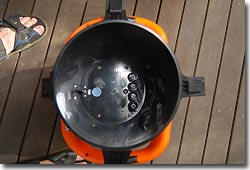 Mounting
points for a leash are better place on the cowling rather than the handles of
a scooter, one on each side of the cowling so the scooter pulls straight and
doesn't veer. It comes down to basic physics. Having the tension/load in front
rather than behind the prop on a tow behind scooter will steer the scooter and
cause you to work more to keep it pointing straight (work harder than you'd
need to if the tow points were behind the prop). Having the tow points on the
cowling means the drag is behind the thrust so you should find it much less
effort to ride the scooter in a straight line.
Mounting
points for a leash are better place on the cowling rather than the handles of
a scooter, one on each side of the cowling so the scooter pulls straight and
doesn't veer. It comes down to basic physics. Having the tension/load in front
rather than behind the prop on a tow behind scooter will steer the scooter and
cause you to work more to keep it pointing straight (work harder than you'd
need to if the tow points were behind the prop). Having the tow points on the
cowling means the drag is behind the thrust so you should find it much less
effort to ride the scooter in a straight line.
Putting the mounting points in front of the thrust is like putting the cart in front of the horse instead of behind. A recipe for disaster.
Having the tow points on the cowling also means the ropes are not in the way of the controls and you can flip the scooter over and drive with either hand. See my next point about the triggers/throttle controls. I'm not sure how easy it would be to attach tow points to the cowlings of either model as they didn't seem that robust.
Lending a hand
The controls of the two scooter models differ substantially. While both scooters have two trigger/throttle controls, on the Explorer model both controls do the same thing. You have a trigger/throttle on both handles and you click once, twice or three times to alter the speed. On the Supercharged on the other hand (no pun intended) there is a power switch on the right handle and 'Supercharge' button on the left. Meaning if you want to go a bit faster you need to use both hands, as both triggers must be pressed at the same time.
I think having to use two hands to drive a scooter is sub-optimal. You need
a hand free to adjust buoyancy, equalise, check your pressure gauge and check
your compass. The depth gauge is not a problem because you just need to make
sure you move it around your wrist until it's facing you and you're ready to
go.
So finally we have a clear winner right....
....sorry, wrong.
In my opinion having two switches that do exactly the same thing is unnecessary and introduces a potential failure point to the design. A short anywhere in the circuitry will stop the Explorer scooter dead in its tracks (or force it to cut off every few seconds in an annoying jerky fashion) so what you have effectively done is double your chances of having a fault originating in the trigger mechanism that could kill the scooter.
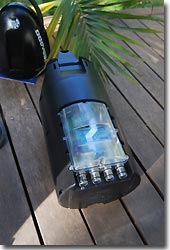 If
you consider my earlier advice that the tow points should be on the cowling
this completely eliminates the need for a second switch. In this position you
can easily flip the scooter over and drive with whichever hand you want to.
Even if the tow point remain on the handles this is possible but the cowling
works better.
If
you consider my earlier advice that the tow points should be on the cowling
this completely eliminates the need for a second switch. In this position you
can easily flip the scooter over and drive with whichever hand you want to.
Even if the tow point remain on the handles this is possible but the cowling
works better.
It would also be better if the switches were completely sealed and perhaps employed
a magnetic switch or the like to avoid ingress of water? Probably the three
speed levels would preclude this but not sure I'm keen on this anyway (I prefer
the simplicity of having an adjustable blade pitch like on Gavins, Oceanics
and others).
Getting the balance right
You may be shocked to hear this but I think I have finally found an area where I can separate the scooters and declare a winner. It's the Explorer model and here's why.
On several of the dives I did with the SEA-DOO Scooters I was doing research work and needed to stop and hammer in star pickets, take photos or perform some other work. On these occasions I didn't need to be holding on to a scooter. Having a leash I was able to let the scooters float behind me but the models are not equal on this score.
I should point out that I think it's important for a host of reasons that a scooter can be easily towed and that a scooter remains in good trim while towing. For work or to take photographs you need to be able to let the scooter go and not have it float away or damage the corals or other bottom growth. Scooters should be neutral to slightly positive and float horizontal and nose first so they don't create much drag (to make it easier to tow the scooter back to shore or a boat if it runs out of juice or fails, or to carry a spare scooter).
The Explorer scooter appeared to sit perfectly horizontal while towing and the handle on the nose meant I could feed the leash through the handle, connect it to my crotch D ring and tow the scooter nose first (least drag). I found using all the provided weights made the scooter just slightly positive in seawater. Perfect for towing.
The Supercharged scooter on the other hand did not have a handle on the nose and any additional weight added meant the nose was heavy (leading to poor trim and increased drag). Without the weight the scooter was too buoyant and the nose floated up.
There is only one proviso to this. The nose handle on the Explorer is a great idea but not well implemented. Having the handle removable and rubber I found it kept coming off when I tried to carry the unit on my shoulder for beach entries (due to side ways torsion during lifting). I think the scooters need a nose handle for easy lifting and handling and to pass the leash through for easy towing (so the scooter tracks straight and doesn't create unnecessary drag). However I feel that this should be a permanent fixed handle, not a removable handle (or at least not so easily dislodged). Owners may be able to come up with a fix to prevent the handle coming loose?
Care and maintenance
The Explorer wins out on this too.
The battery module on the Explorer model is easy to remove, charge and install compared to the smaller Supercharged model. The battery also has a longer burn time (although in the times Kay and I used the scooters neither ran out of juice).
The handle and switches on the Supercharged model worry me a little also. They do seem a bit flimsy. In general the scooter did not feel as robust as the Explorer.
What I would really like to know though is how both scooters hold up long term from extended use. I have concerns about the complexity of the Explorer and the potential for failure of the O rings protecting the switches or other components. Simple is always better underwater. However if the units are well sealed and the switched survive well after multiple years of use then the cost benefit equation comes out in favour of these cheaper scooters for general diving applications. So would I buy one? Which one?
Short answer is probably. There is no getting past the fact that these are a lot cheaper than other scooters on the market and really fun to ride. They may appeal to people (like me) who would otherwise not buy a scooter.
 Surprisingly
at present I find myself leaning toward the Supercharged because despite my
doubts about the controls and trim issues it is significantly cheaper (a real
budget scooter), significantly lighter (for shore entries and carting around
at the dive shop) and simpler in design (which appeals, would rather have a
scooter keep going on a dive rather than cut out because it gets a little drop
of water inside). While the Supercharged only has two power settings and a lower
rated top speed we found it kept pace easily with the Explorer on the dives
we did. What could/would they be used for?
Surprisingly
at present I find myself leaning toward the Supercharged because despite my
doubts about the controls and trim issues it is significantly cheaper (a real
budget scooter), significantly lighter (for shore entries and carting around
at the dive shop) and simpler in design (which appeals, would rather have a
scooter keep going on a dive rather than cut out because it gets a little drop
of water inside). While the Supercharged only has two power settings and a lower
rated top speed we found it kept pace easily with the Explorer on the dives
we did. What could/would they be used for?
My fourth dive with the scooters was a working dive at Julian Rocks (looking for locations to install plots for monitoring coral dieback/disease). From the moment Kay and I hit the water it was clear this was going to be a challenging dive. We were immediately swept away from the boat by the current. Not sure how strong but significant. I could swim against it but with quite a bit of effort (didn't help all the extra weight I was carrying, heavy star pickets, sledge hammer, etc).
The objective for the dive was to complete one or more transects (covering 100 metres or so) wide of the nursery looking for suitable sites for plots for research work. Had we not had the scooters there is no way this objective would have been achieved.
Immediately we hit the bottom the advantage of having a scooter was apparent. While we didn't make rapid progress we were able to make headway against the current. If we hadn't had the scooters on this dive I would not have been able to cover anywhere near the area I did. We located my earlier plots and then did a wide southerly sweep and then returned a little closer to the rock to cover as much ground as possible. The return trip was much slower but if we'd been swimming the only way we'd have made progress would have been dragging ourselves hand over hand along the bottom. This was a challenging dive that was made significantly more enjoyable and productive by having a scooter.
I used the Explorer scooter for the entire dive on setting 3 (full speed). I found that on the safety stop I made gradual headway on setting 2 and significant headway on setting 3, which is something I wasn't expecting. I expected these tiny scooters to struggle or barely hold position in these sort of conditions. Kay was easily able to keep up with me with the Supercharged scooter.
I would say that these scooters could be use to explore dive sites provided you stayed within easy swimming distance from the shore/boat (in case of a failure) or made adequate contingencies. They could reduce the effort, CO2 build-up and hence narcosis on deeper dives, with a similar proviso that you make contingencies so you don't get into a situation where you're fighting currents or swimming long distance at depth dragging a failed scooter. Any contingences should take into account sufficient gas reserves to return to a boat or shore without the help of the scooter. Finally, a scooter is great for someone who wants to add a new interest or challenge to their diving.
SEA-DOO Supercharged
Pro's: Lower price, less weight (easy to carry out of the water), simpler design, seems just as effective underwater as the larger scooter.
Con's: Handles seem flimsy to me, no proper mounting points for a leash (but both models could benefit from mounting points on the cowling), lower burn time, switches seem a bit flimsy and exposed (but only time will tell), harder to hold if used without a leash (because of the orientation of the handles in my opinion), generally cheaper feel (seems less rugged, who knows), no handle on the nose cone for towing (could probably rig up your own?), doesn't float horizontal when weights are installed in the nose to counteract buoyancy, tow point around the base of the handle is sub-optimal, with or without a leash this model takes more effort to ride in a straight line I felt.
SEA-DOO Explorer
Pro's: Generally more robust feel, proper mounting points for leash on the handles (but would still benefit from mounting points on the cowling instead), longer burn time, handle on the nose cone for towing and carrying, floats horizontally when towed, easier installation and charging of the battery pack, only one hand required to control the throttle.
Con's: I worry about the complexity of the electronics involved, the propensity/design to cut out in the event of water ingress (understandable but would prefer it kept working till total failure for safety reasons), would prefer to see only one trigger and a simpler trigger design, a bit heavy for shore entries (but light years ahead of a Gavin or Silent submersion), I feel the nose cone handle could be better implemented (permanent attachment so it can't come off).
* Please also see a review on a Seadoo VS Supercharged Seascooter
Shopfront
-
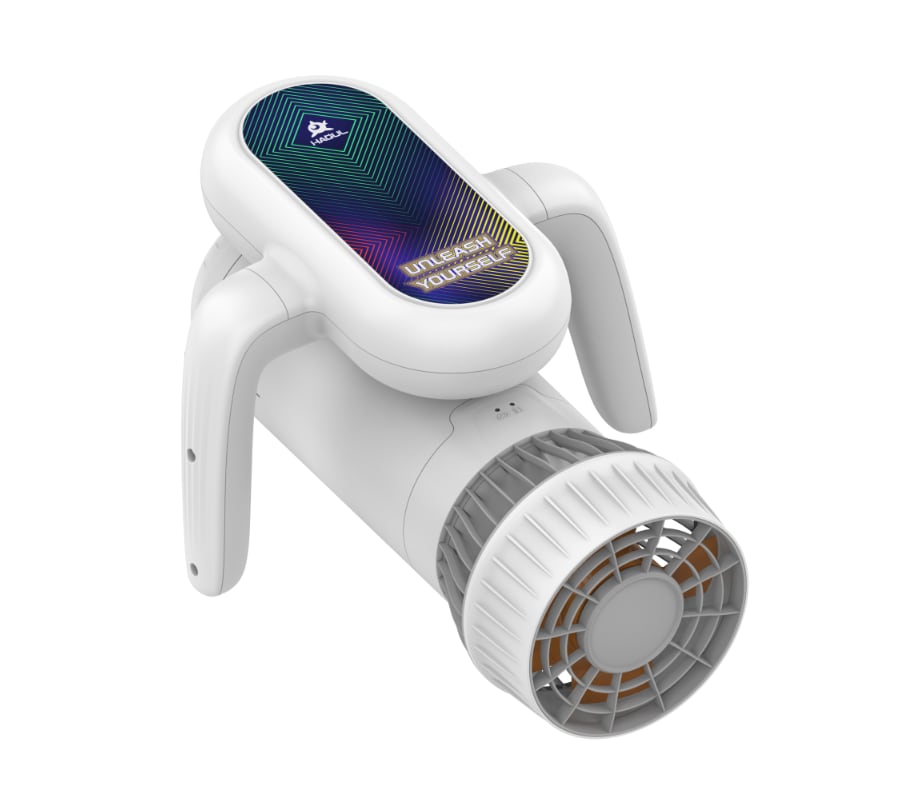 Hagul EZ Underwater Scooter - by Sublue
Hagul EZ Underwater Scooter - by Sublue
- Price A$ 599.00
-
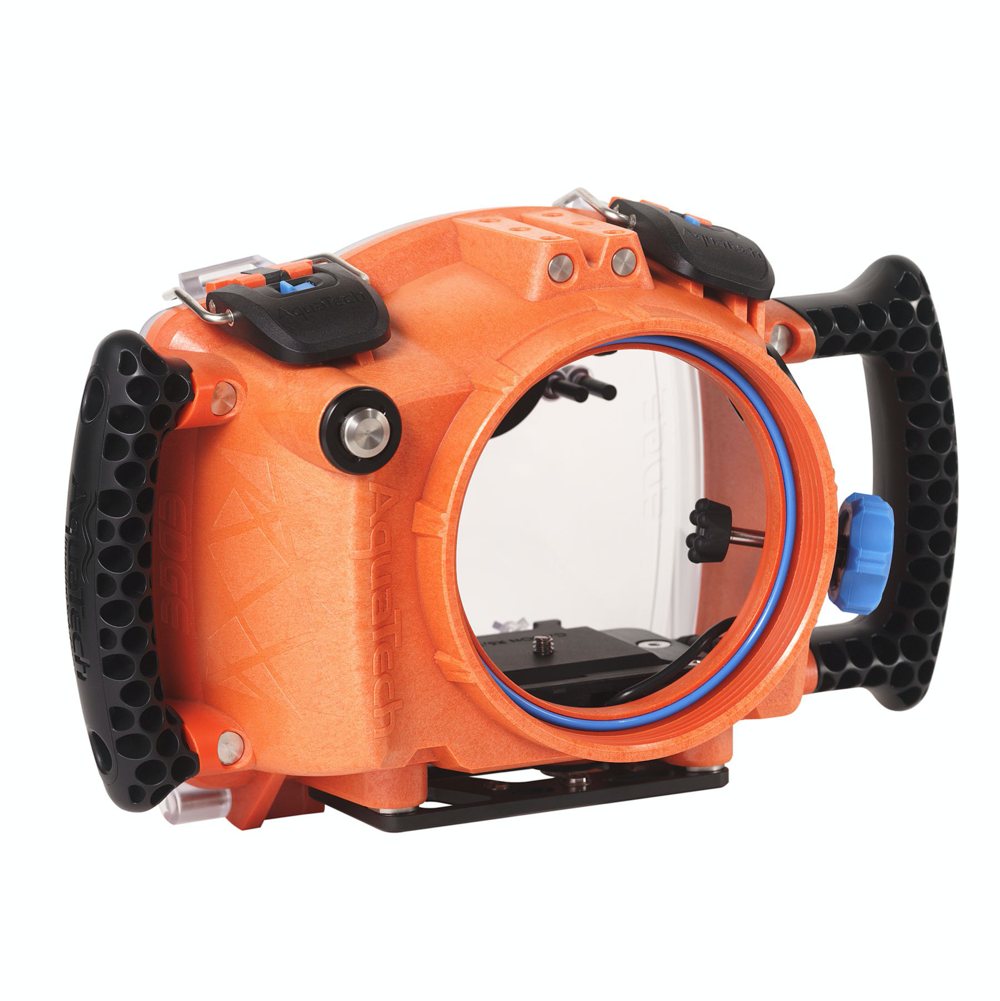 AquaTech EDGE Pro Camera Water Housings - Nikon mirrorless
AquaTech EDGE Pro Camera Water Housings - Nikon mirrorless
- Price A$ 2,149.00
-
 SEABOB Cayago F5 S - PLATIN SILVER - CHROME edition - ex demo
SEABOB Cayago F5 S - PLATIN SILVER - CHROME edition - ex demo
- Price A$ 12,999.00
-
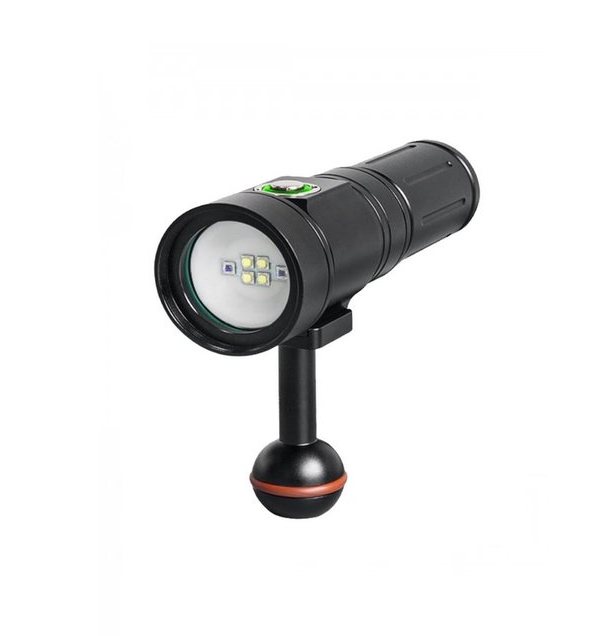 Scubalamp PV22 LED Video/Photo Light - 2000 lumens - UV option
Scubalamp PV22 LED Video/Photo Light - 2000 lumens - UV option
- Price A$ 179.00
-
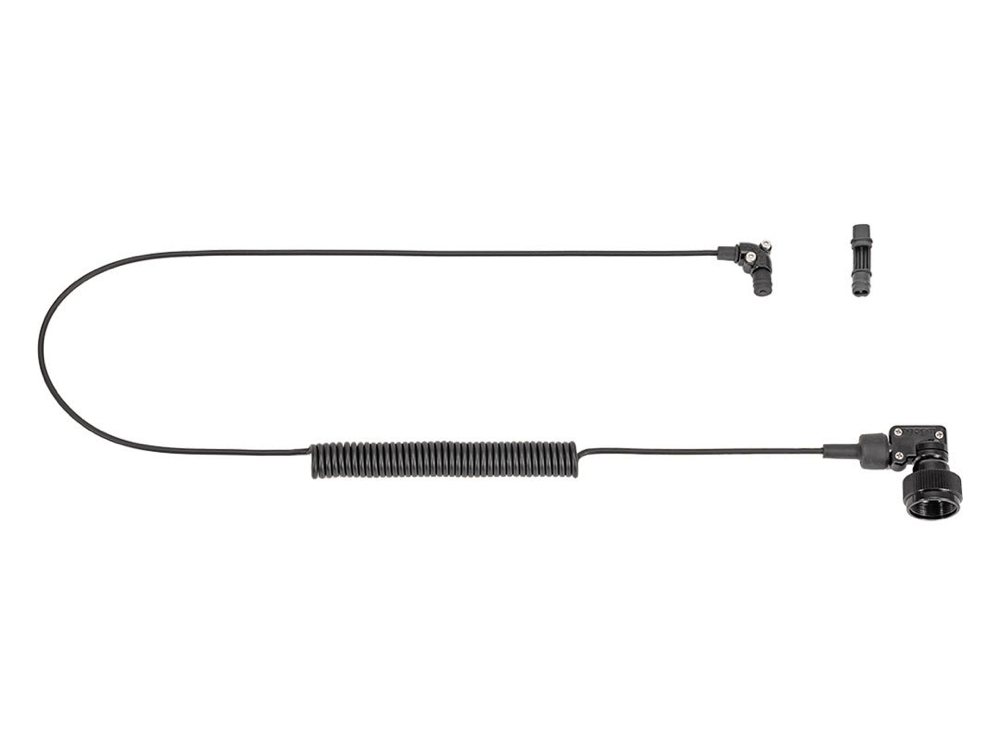 Inon Optical D Cable L Type L Rubber Bush Set 2
Inon Optical D Cable L Type L Rubber Bush Set 2
- Price A$ 139.00
-
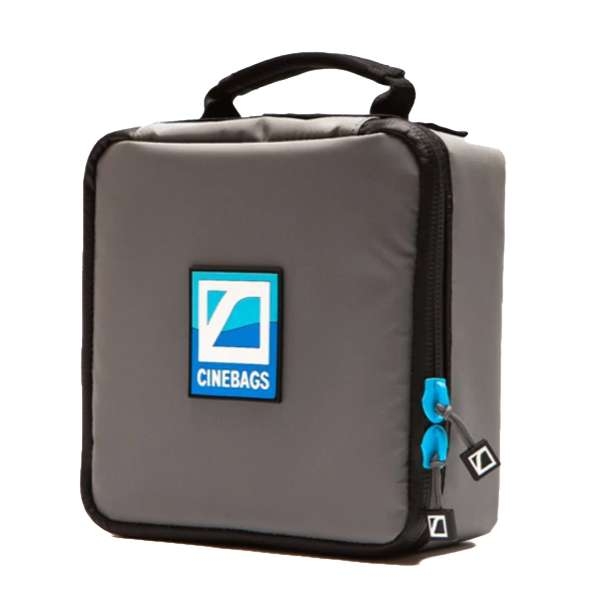 CineBags - CB74 Dome Port Case
CineBags - CB74 Dome Port Case
- Price A$ 123.95
-
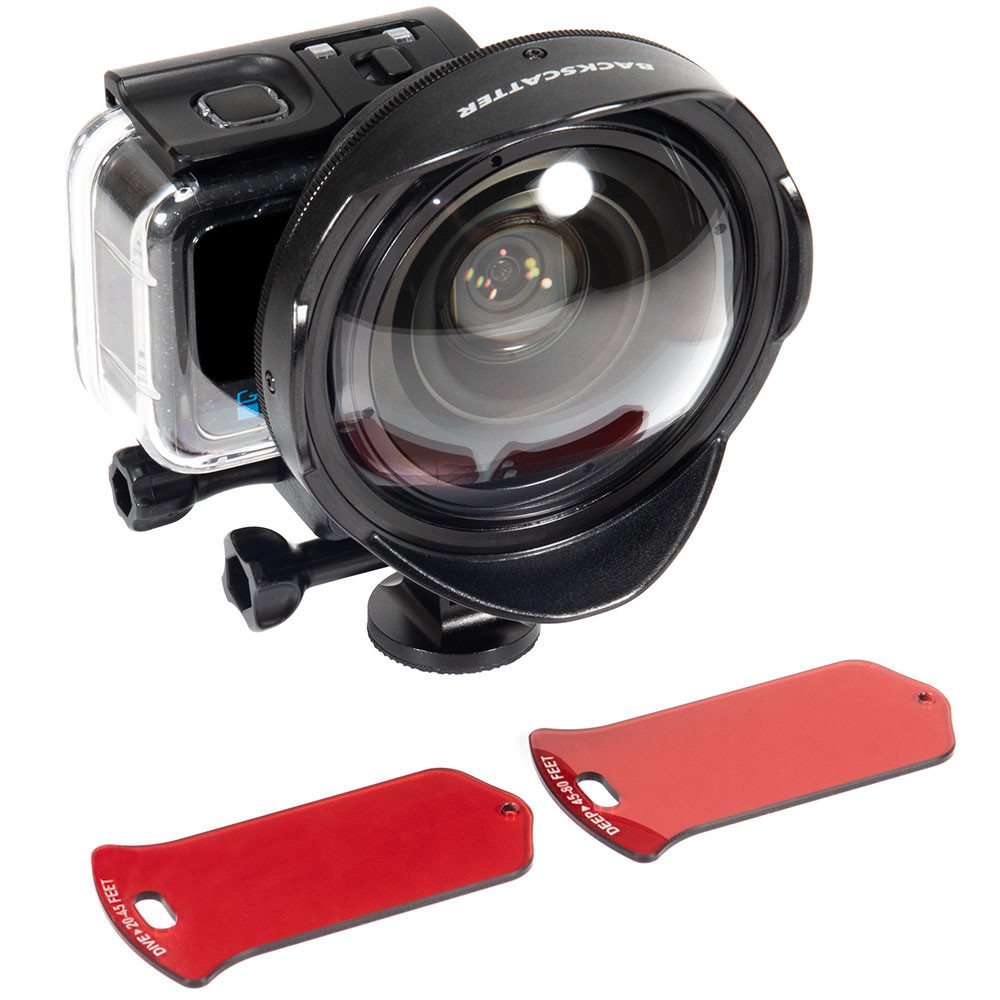 Backscatter Sharp Wide Lens Pro Package for GoPro
Backscatter Sharp Wide Lens Pro Package for GoPro
- Price A$ 479.00
In the Directory

 Seabob Sales
Seabob Sales
Official dealer of SEABOB Luxury Seatoys by CAYAGO. Addictive fun on and underwater. Dive in and discover. Made in Germany.
 QYSEA Australia
QYSEA Australia
QYSEA Australia - we are the exclusive distributor Fifish V6 and other fantastic underwater drones from QYSEA.


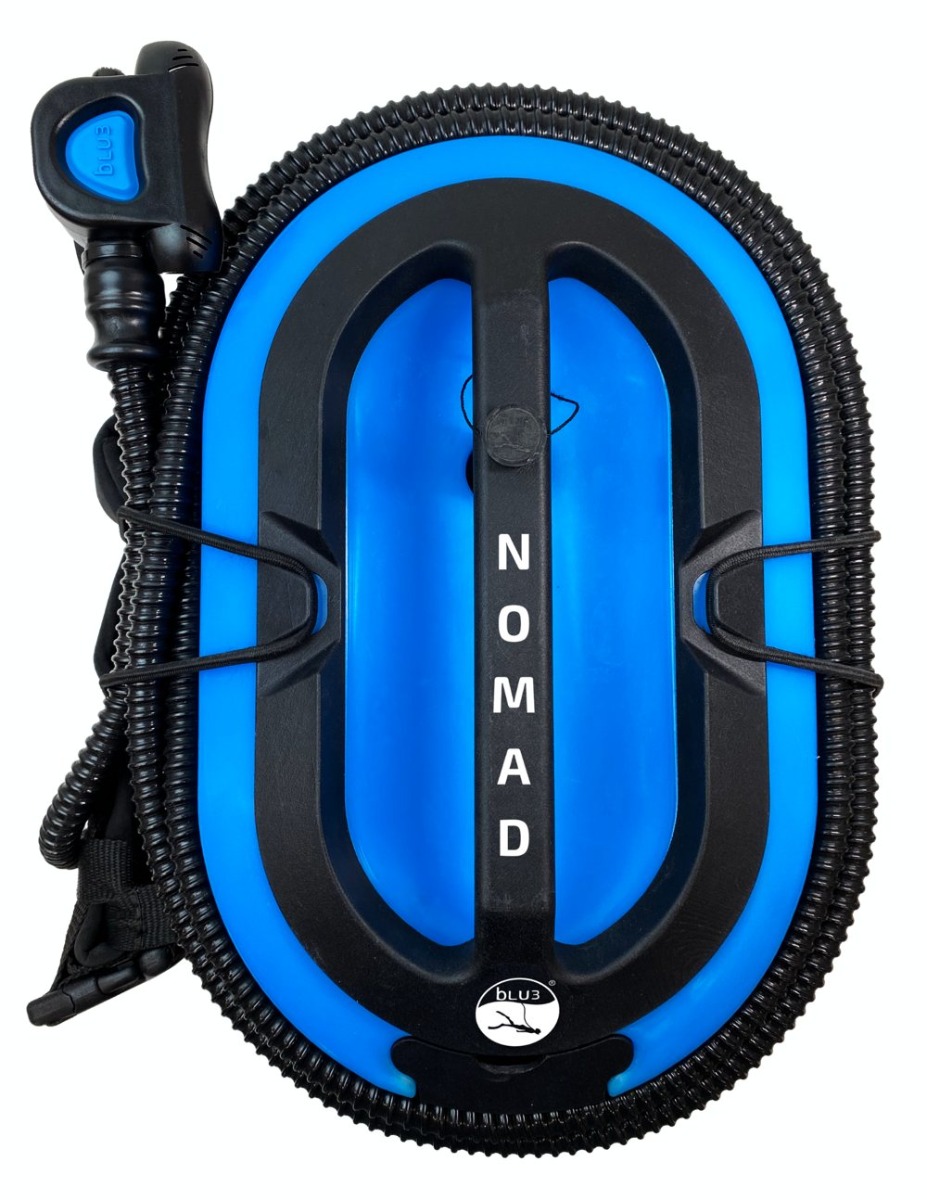
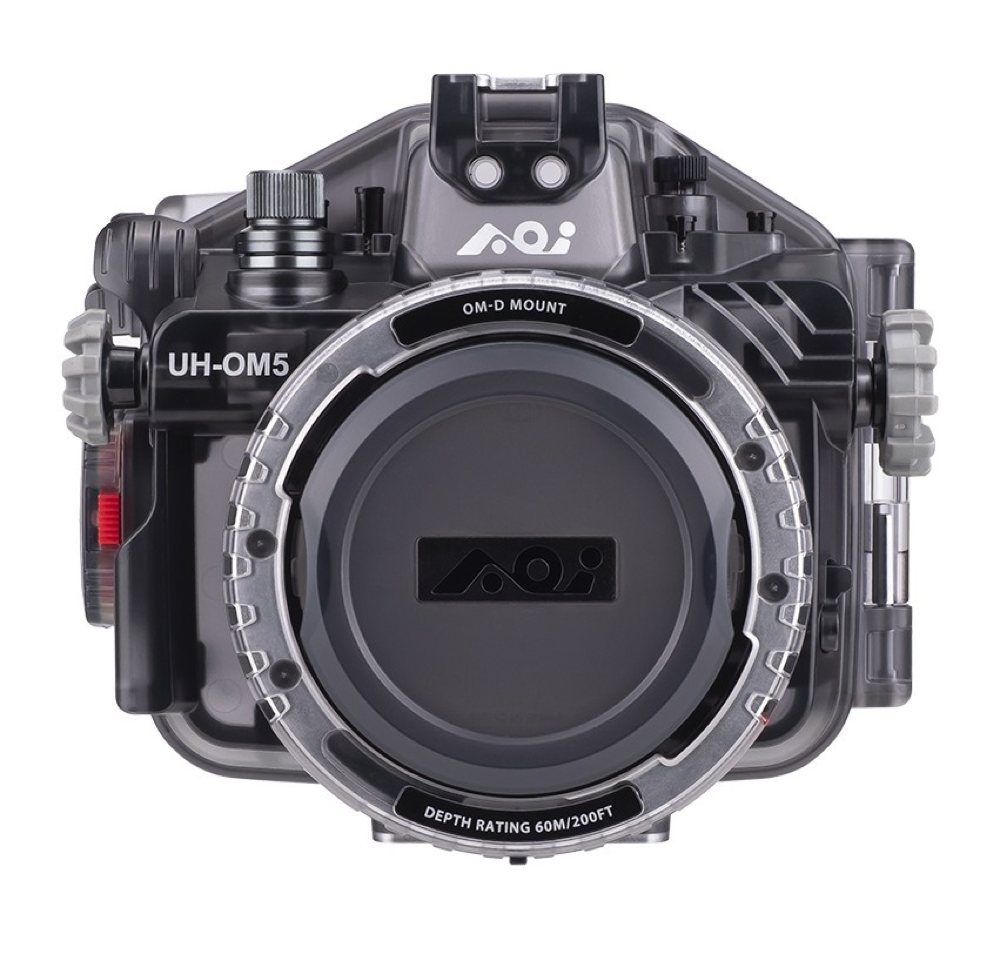
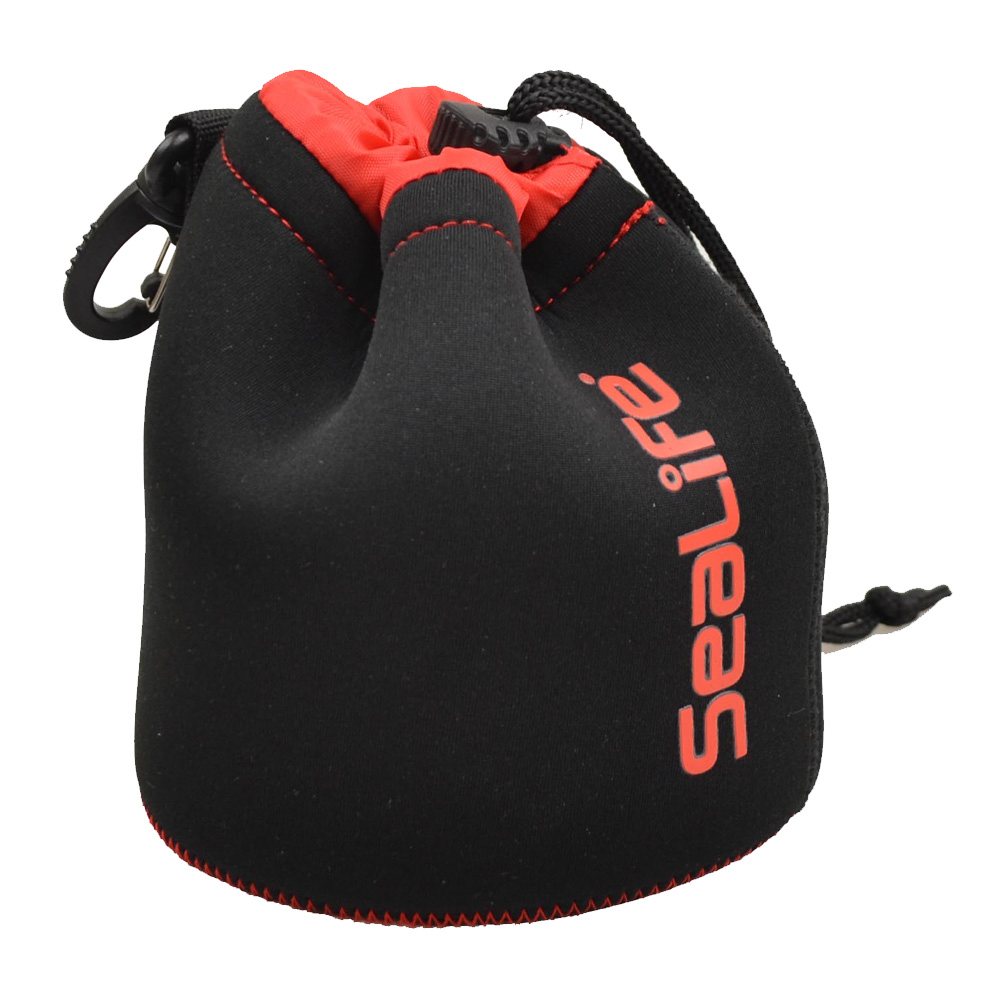
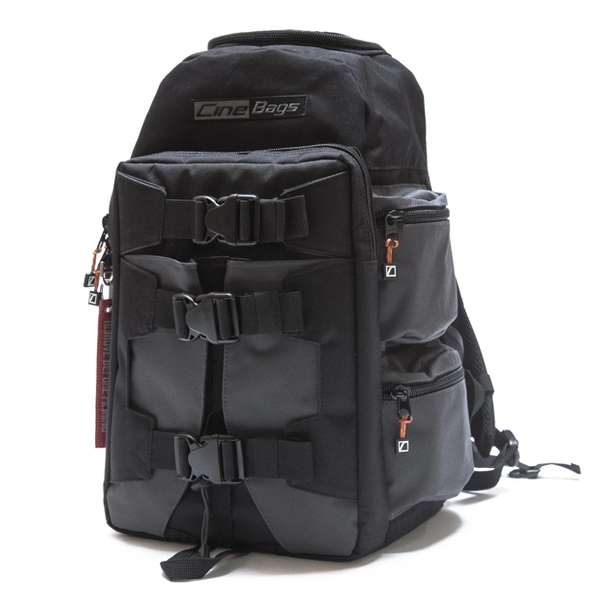

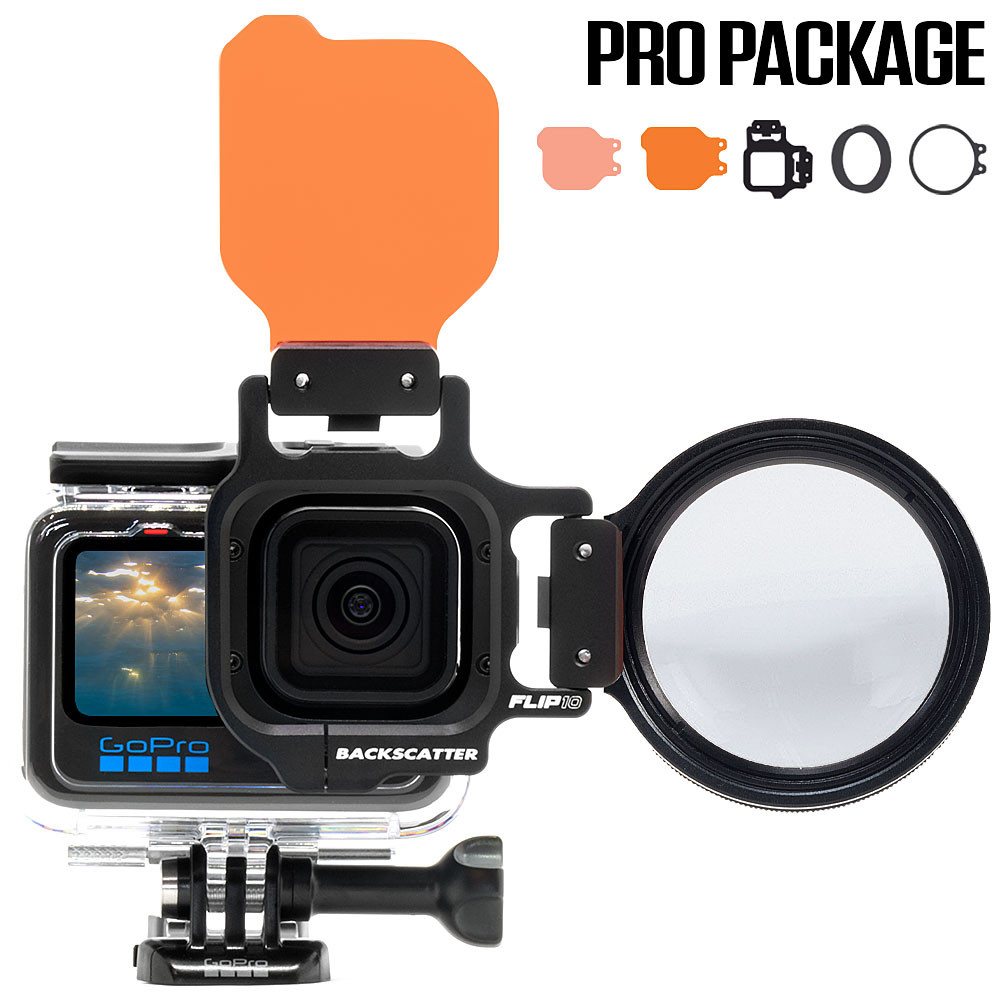
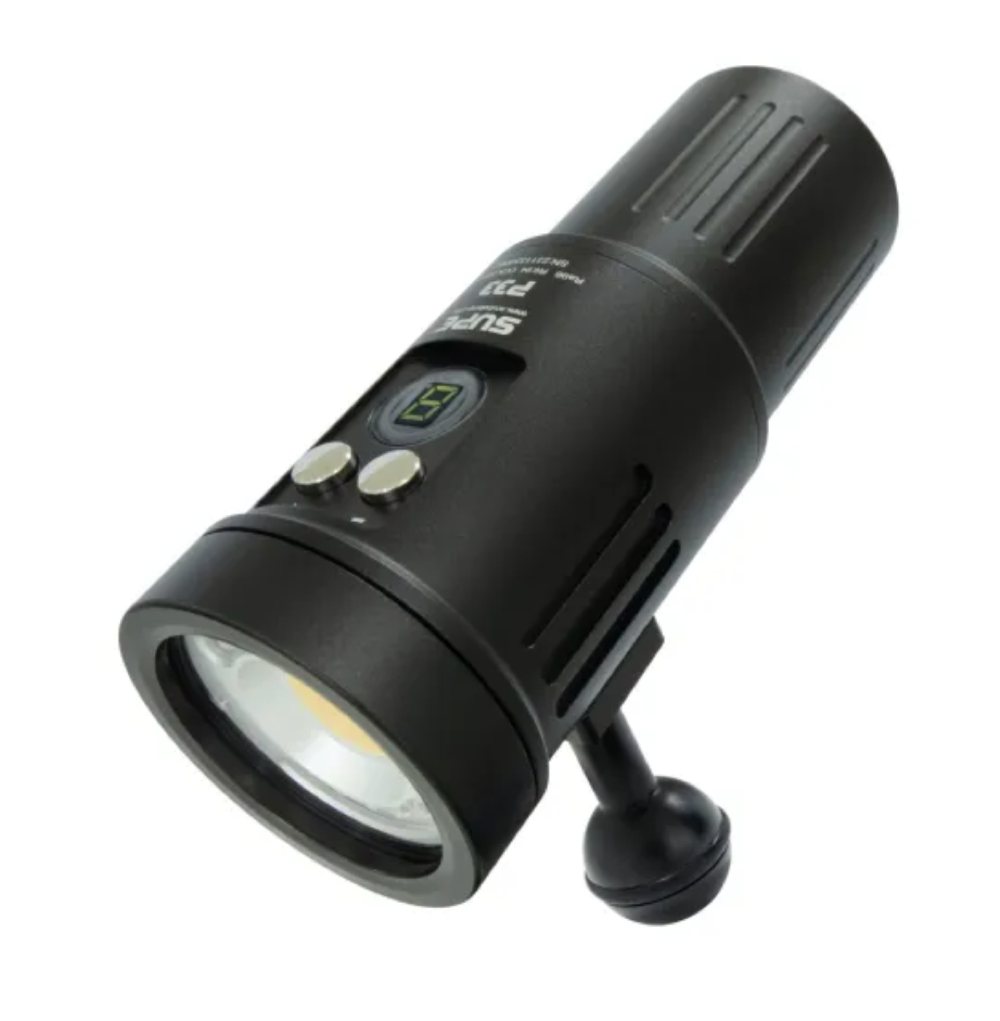
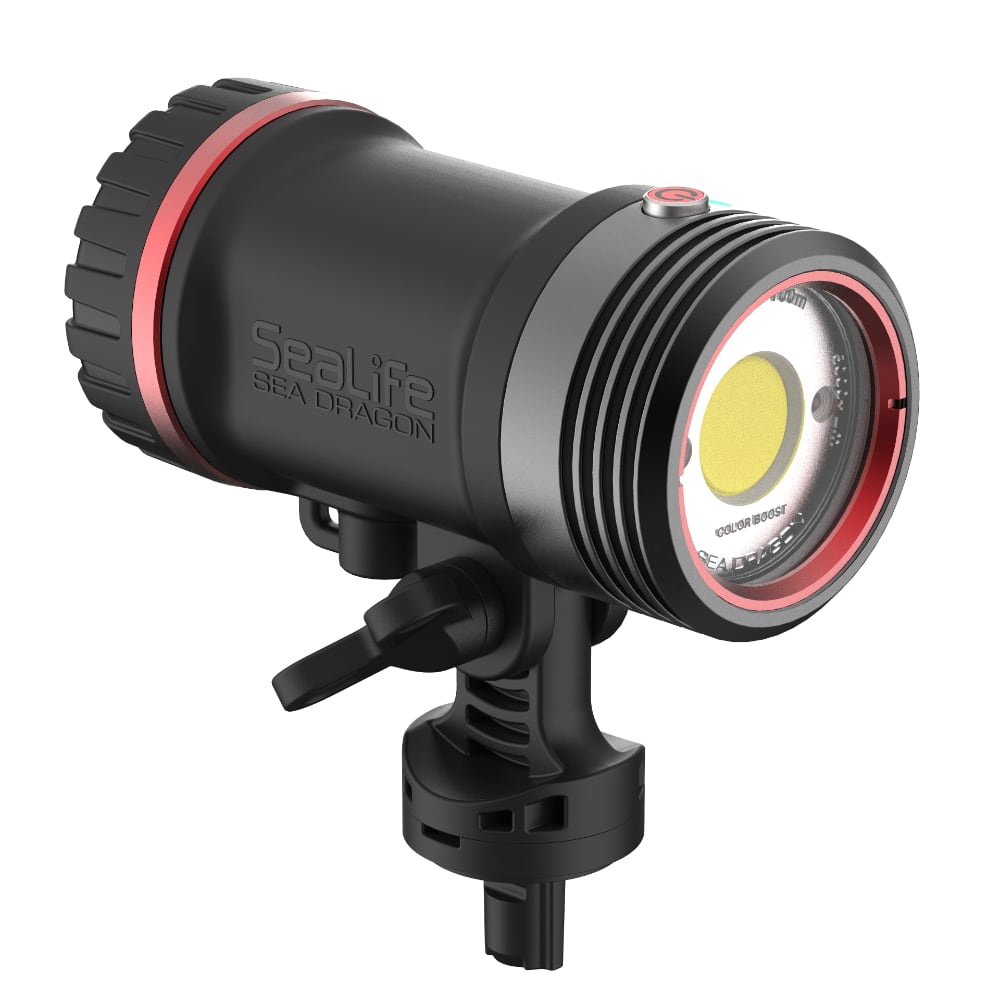



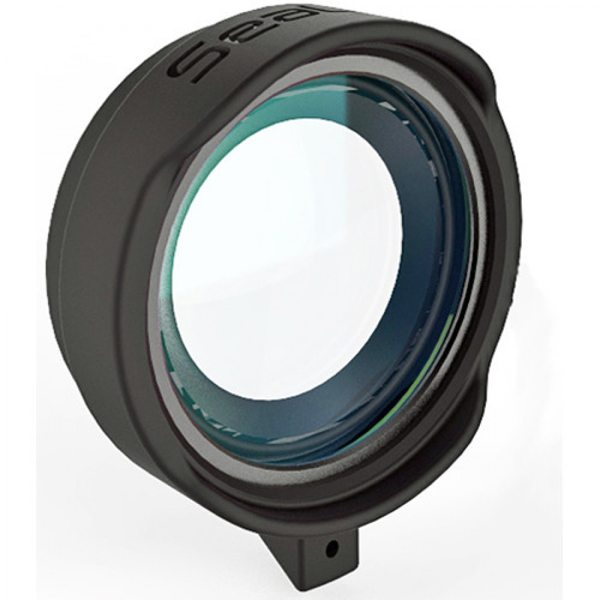 Sealife Super Macro Close-Up Lens for Micro HD / 2.0 / 3.0 and RM4K
Sealife Super Macro Close-Up Lens for Micro HD / 2.0 / 3.0 and RM4K 



